Spring Trip To The Flint Hills – Day 2
For those of you that missed the 1st day of our trip, you can go check it out HERE.
Unlike the 1st day of our trip which was bright and sunny, our 2nd day was cloudy and rainy. No matter though, we were happy to be out and about.
As we packed our suitcases out of our room at the Millstream Motel in Cottonwood Falls, I took a few pics of our view just outside our room.
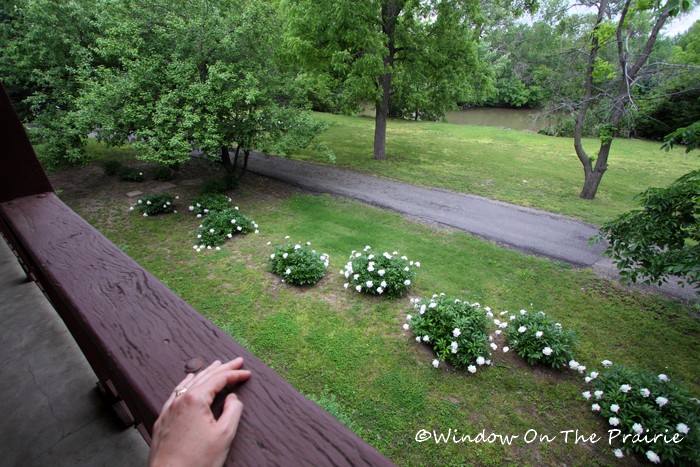
View of the Cottonwood River, swollen with recent rains
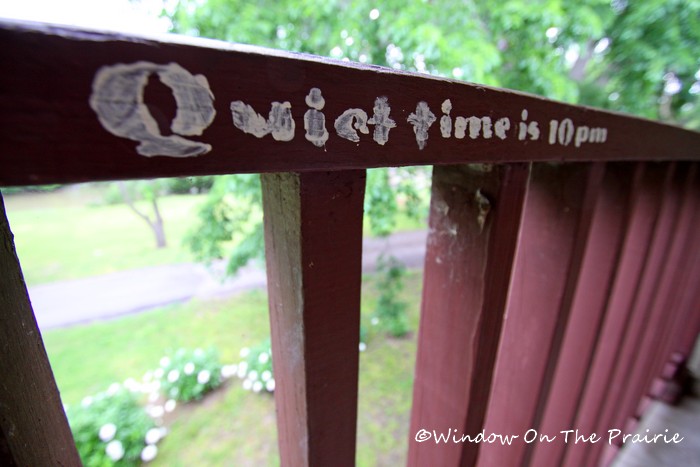
I love this little hand painted message on the balcony railing just outside our room. Not that it’s necessary – we’ve always had quiet neighbors when we stay here. The motel just seems to attract quiet well-behaved guests.
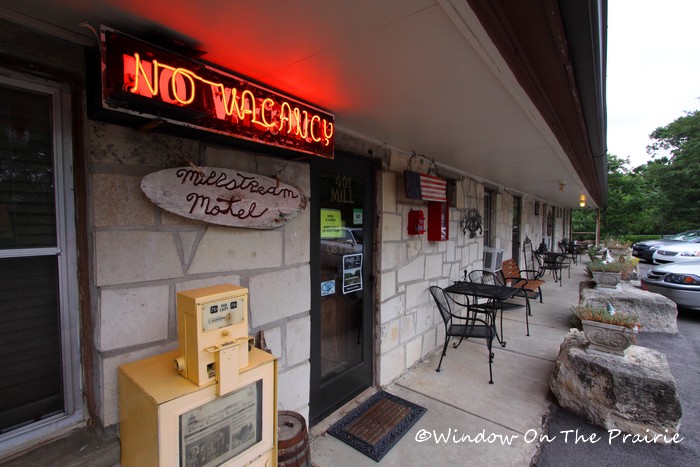
The Millstream Motel
Just up the street is the Chase County Courthouse. Built in 1873, it underwent a restoration several years ago, but we found that the clock tower is once again enclosed in scaffolding. Don’t know why. I did some looking online, but found no answers.
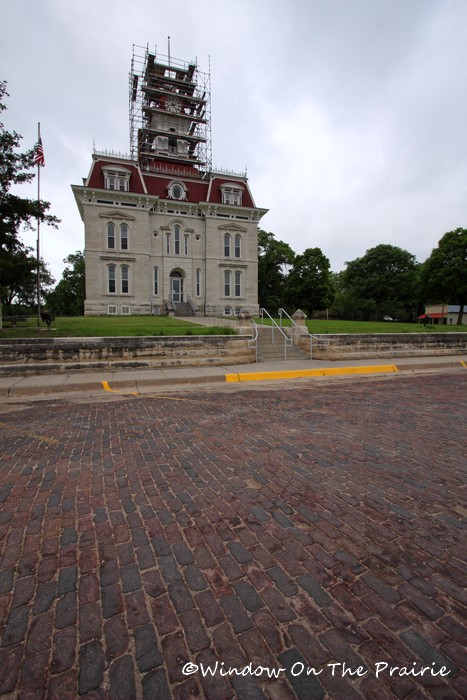
We breakfasted at a convenience store, and then began our journey north towards home.
We stopped at the old deserted train station in Strong City.
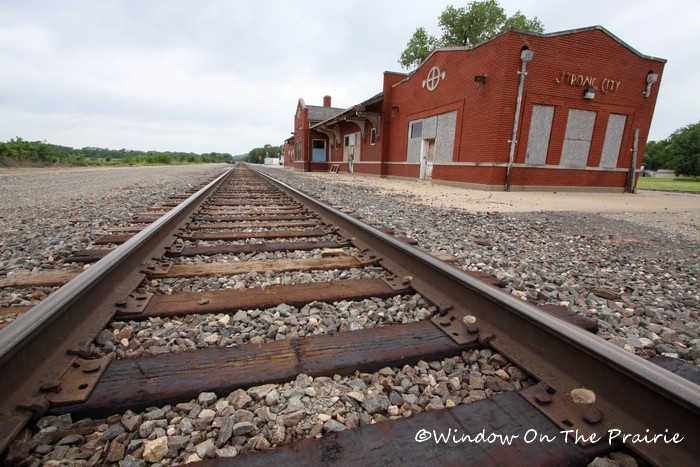
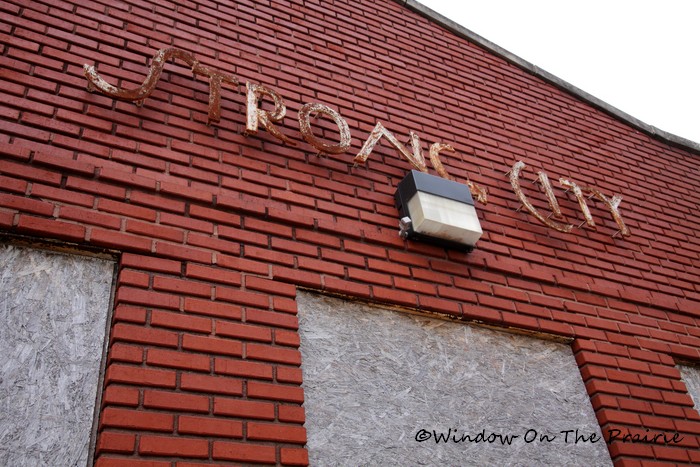
Today is sits alone and quiet. Trains no longer stop here but whiz past without even slowing down.
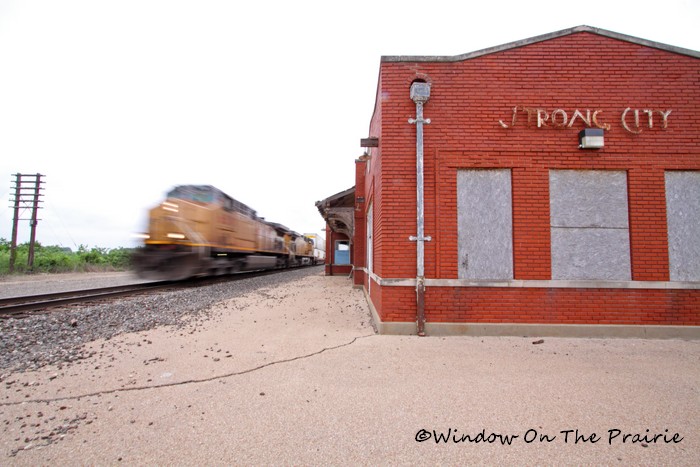
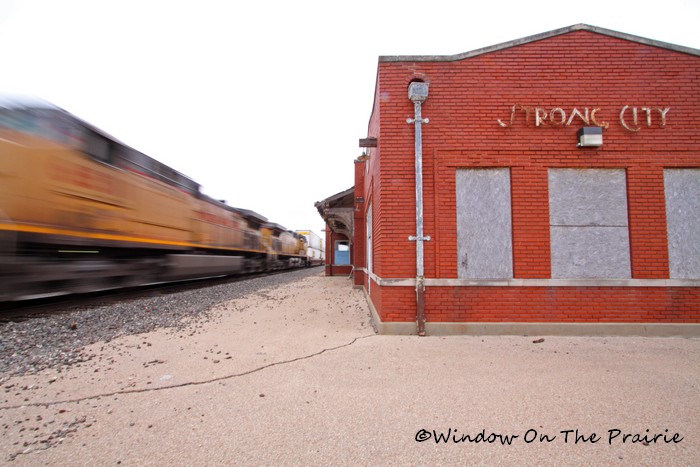
There was a time when the little station was a hub of commerce and activity. Completed in 1913 at a cost of just $20,000 of brick with a tile roof, it handled both passengers and freight. But in the late 1940s, passenger service ended. In 2007 it was added to the list of the National Register of Historic Places. According to the National Register application,
“The 1913 depot was a combination depot, meaning it had several purposes. It was built to serve large numbers of people while also meeting the needs of the railroad personnel. Passengers were provided with their own waiting areas away from the daily operations of the railroad. Women and children were given a separate waiting area on the east end of the building away from the main waiting room. Railroad personnel operated in the center portion of the building. Employees also transferred baggage, goods, and freight from the train to the simple unadorned freight room on the west end of the depot. The depot provided regular mail and freight delivery. Nearly everything the citizens and businessmen of Strong City and Chase County needed came through the depot. An abundance of passenger traffic and freight delivery continued at the depot for several years. However, the automobile and trucking industries were emerging as alternative modes of transportation, and the railroads began to see decreasing numbers. Passenger service to Strong City ended in the late 1940s.”
The building still has the original tile roof, painted plaster walls, wood trim, signalman’s table, ticket counter, wooden benches, windows, doors, and light fixtures.
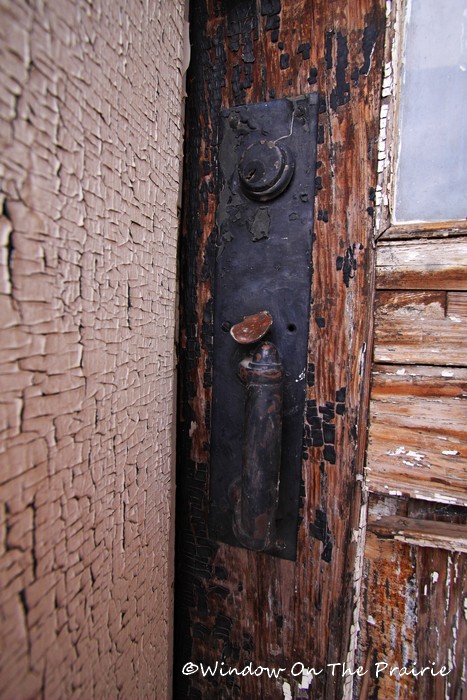
Door handle
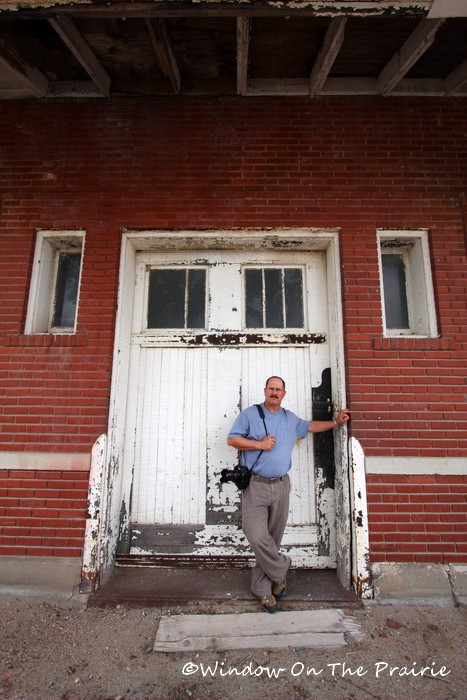
Freight doors
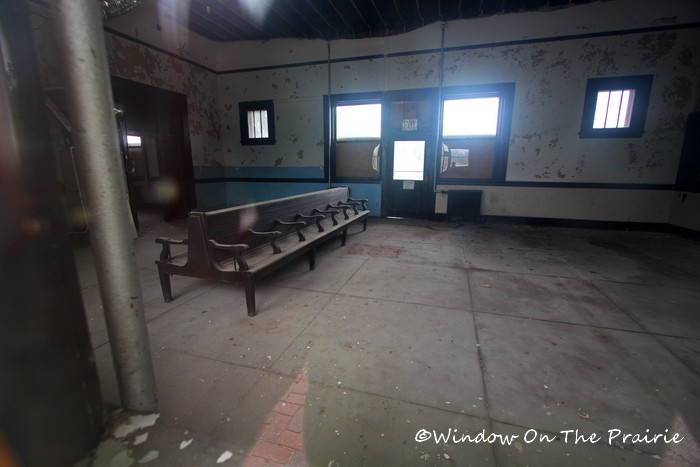
Waiting room
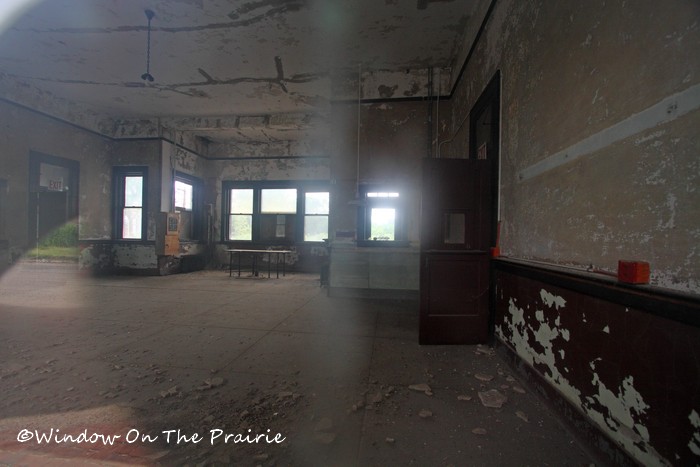
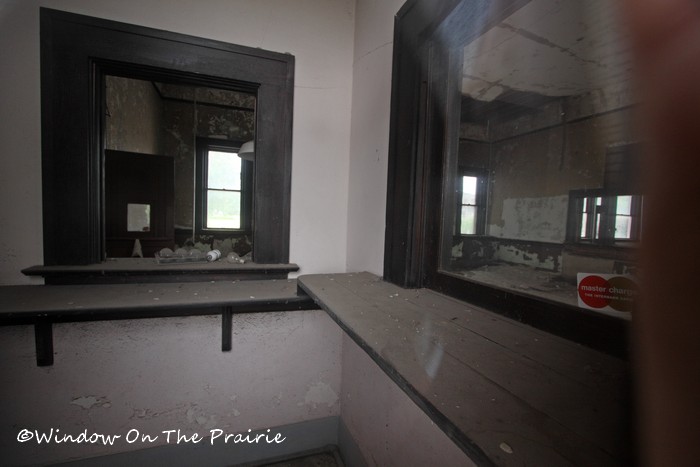
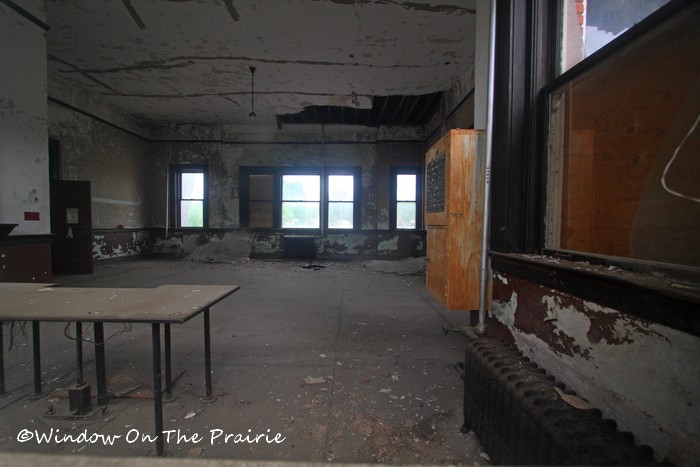
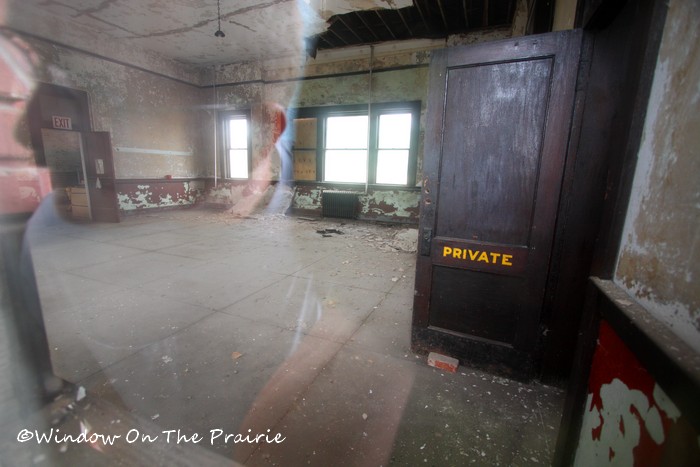
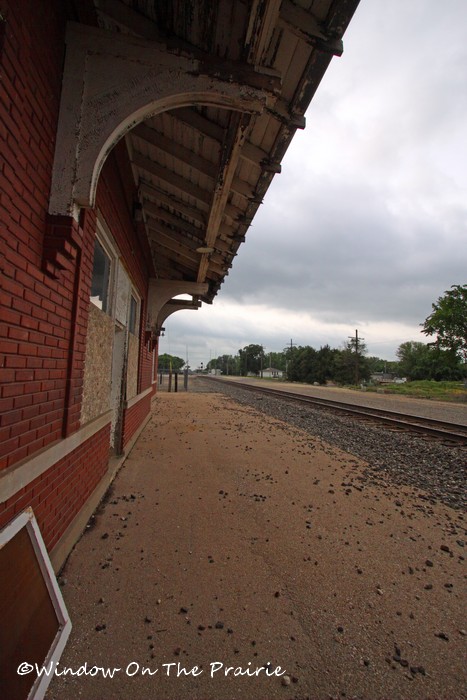
Plans are currently underway to restore the station and open it up for visitors.
Back on the highway, we headed east to Emporia intending to stop at one of our favorite antique malls located in an old warehouse near the railroad tracks.
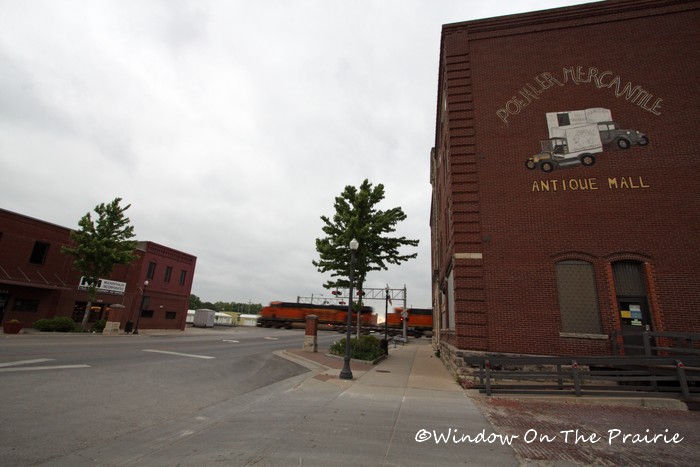
But it was closed due to the holiday, Memorial Day. Sigh….
So we continued on north towards home. Earlier in the day, we saw on weather radar that a large storm had skirted just to the north of us, and when we arrived in the area where the storm had just past, we were met with swollen streams and water running over the country roads.
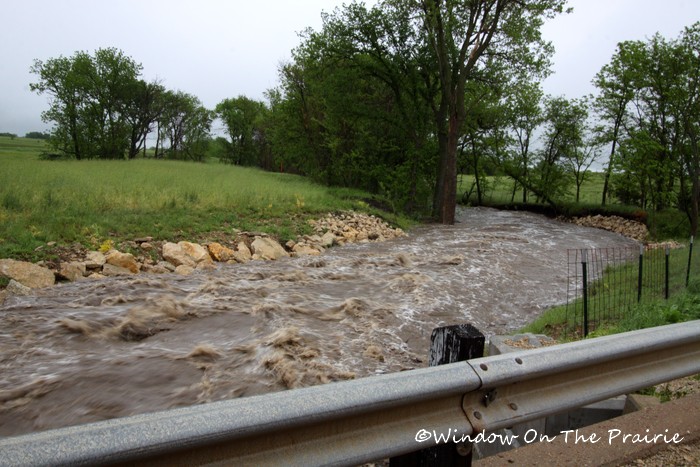
This area has had drought conditions for the last 2 years, so I’m sure the locals were glad to see the rain, but maybe not so much all at once.
There aren’t many trees in the Flint Hills region, so the early immigrants quickly learned that the only abundant supply of building material was rock. They used rock in everything from houses and barns to the fences used to contain their cattle and horses.
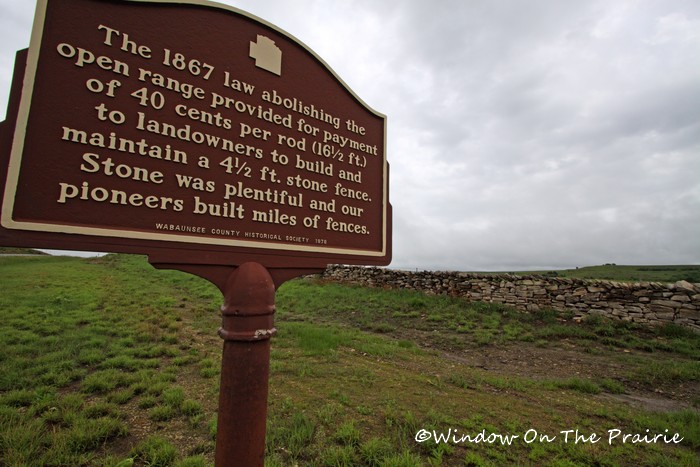
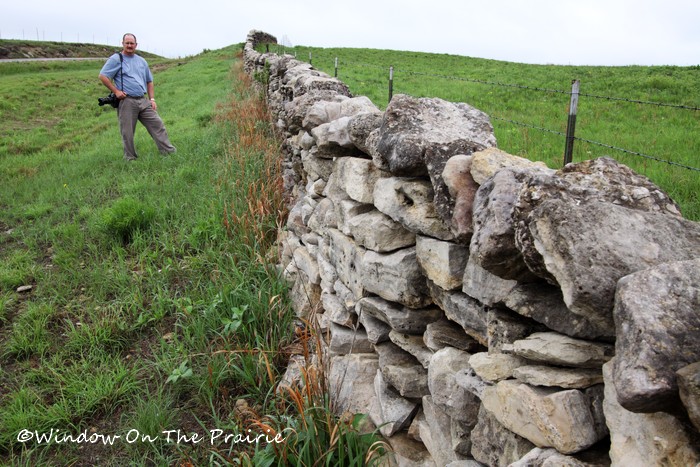
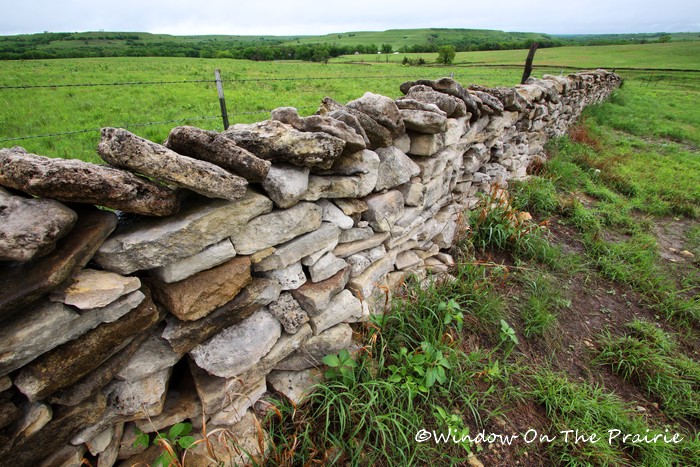
Built in the late 1800s, many of the stone fences still stand today.
This little Catholic church in Alma was built of local limestone:
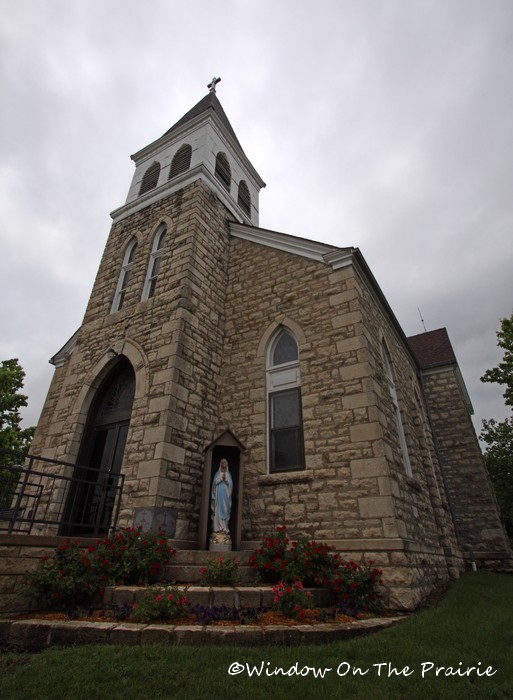
Holy Family Catholic Church, Alma, KS
The Weaver Hotel in Waterville was built in 1905 of limestone too. Unfortunately, it was painted over covering the lovely brown hues of native limestone.
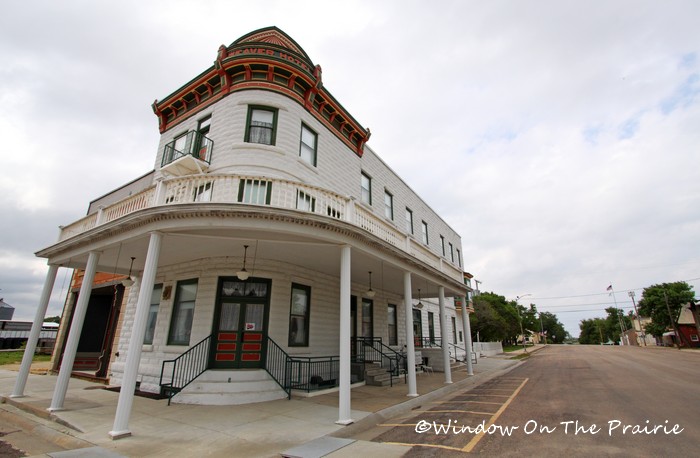
Weaver Hotel, Waterville, KS
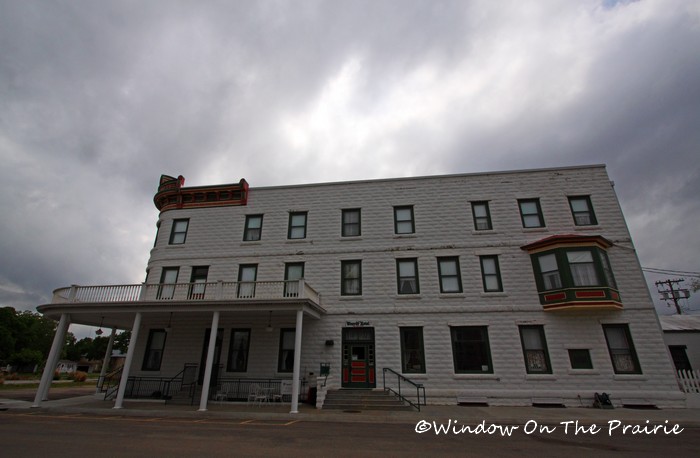
Weaver Hotel in Waterville, KS
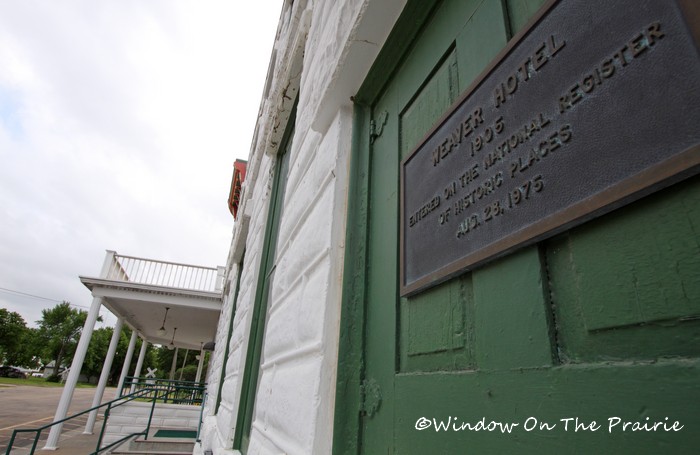
Weaver Hotel in Waterville, KS
According to the Weaver Hotel’s website:
“For decades, the Weaver was the travel, tourism and social hub of this region and of the Central Branch west of Atchison. Built in 1905, the Weaver Hotel sits directly across the street from the railroad tracks. Passengers waited for their train in the front parlor of the hotel, found lodging upstairs, ate in the dining room, and stepped across the street for performances in the Opera House.”
Today the hotel is run as a bed and breakfast. You can check out their website HERE.
And for more information about the hotel’s construction and history, you can check out the National Register of Historic Places application.
Built in 1903, the Waterville Opera House is still there right across the street from the hotel:
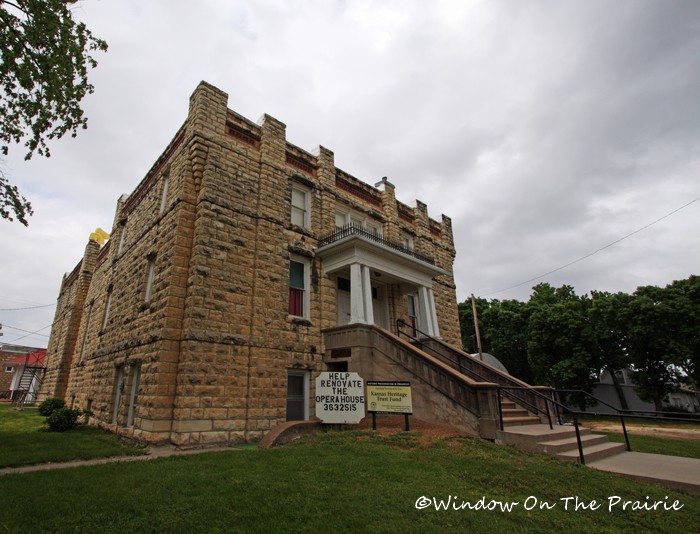
Waterville Opera House
Of course, it is also made of native limestone.
From the National Register of Historic Places application:
“The Waterville Opera House (1903) is located at 200 East Front Street at the northeast corner of Front and Kansas Streets. The 87′ x 46′ building faces south toward the Missouri Pacific Railroad tracks. The opera house was built by local craftsmen with locally quarried limestone and has remained in the ownership of the city since its construction. The bottom floor was built to house the city’s government offices, library, banquet room, kitchen, restrooms, and dressing rooms. An auditorium and raised stage has always occupied the second floor space. The city has maintained the building and it remains in good condition.”
Fortunately for us, there was someone there the day we stopped and we were able to get a peek inside:
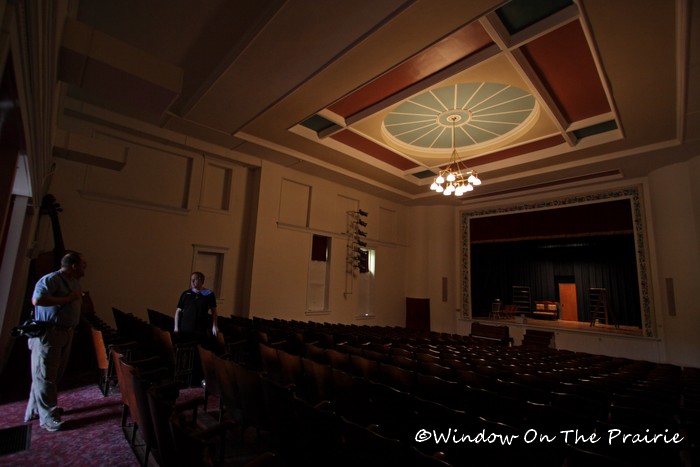
Waterville Opera House

Waterville Opera House
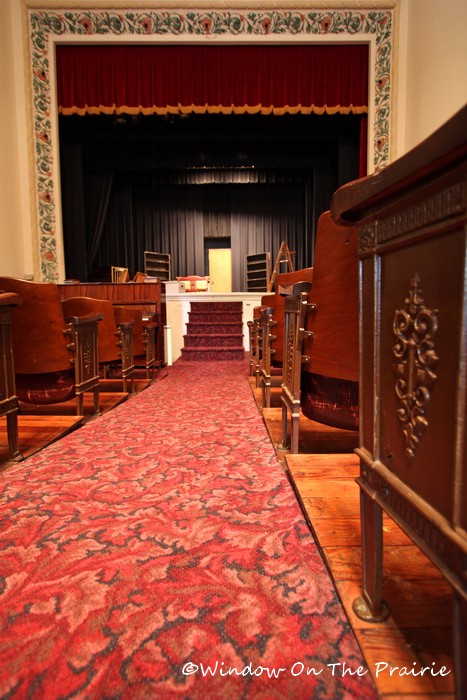
Waterville Opera House
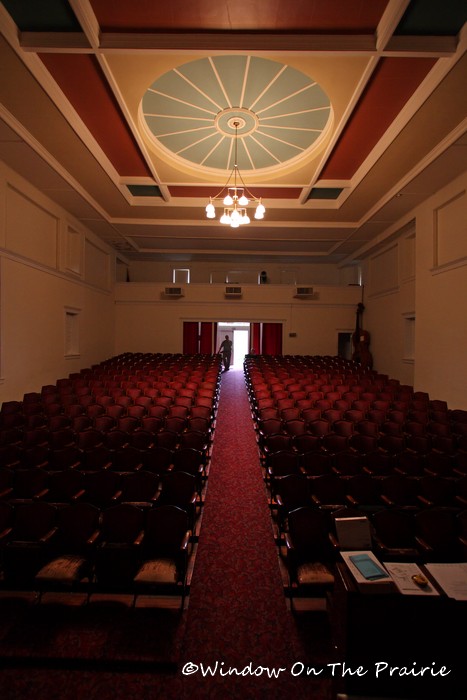
View from the stage at the Waterville Opera House
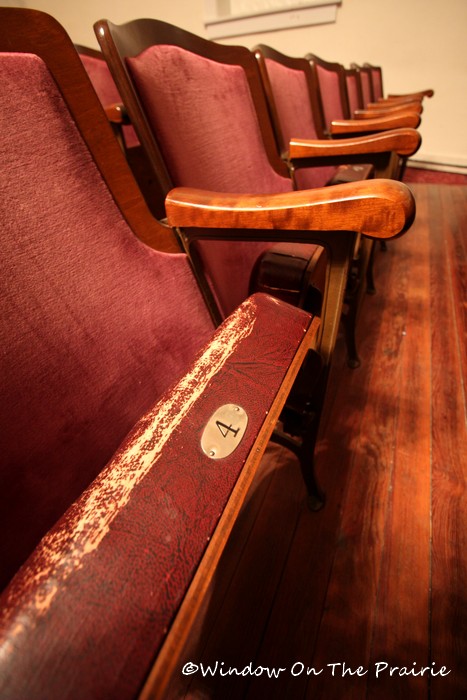
Pick a seat at the Waterville Opera House
We headed next to Alma where we stopped for lunch at the Antique Emporium. Of course, it and the surrounding buildings are all built from native limestone.
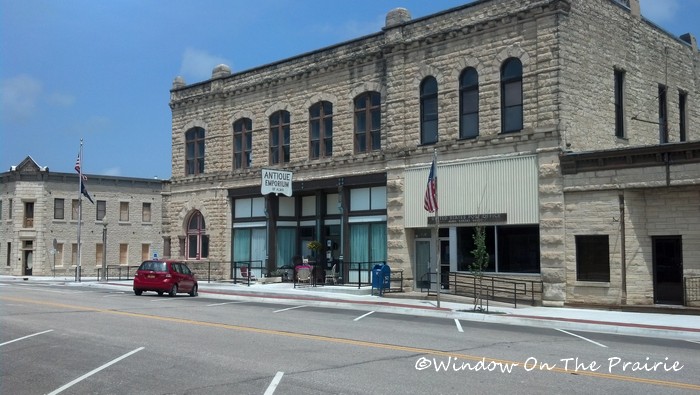
Antique Emporium, Alma KS
I scored a 1950s china Homer Laughlin sugar and creamer set and a hand-embroidered dresser scarf. Harland scored some old Kansas books.
Next, we headed across the street to Chunky’s Snack Shack, an ice cream place converted from an old corner gas station.
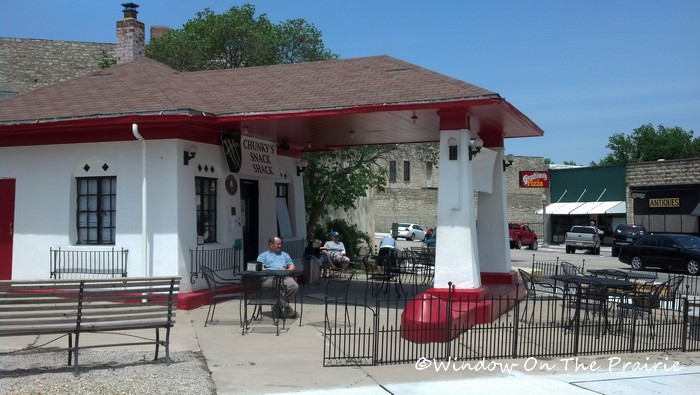
Chunky’s Snack Shack, Alma, KS
With tummies full of ice cream we headed for home arriving in the late afternoon to be greeted by a very happy Kitty.
Have you ever visited the Flint Hills of Kansas? If you have, what areas/places interested you the most? And if you haven’t been to the Flint Hills, I hope this gives you some ideas to plan your trip there.
xoxoxoxoxoxoxoxoxoxoxoxoxo

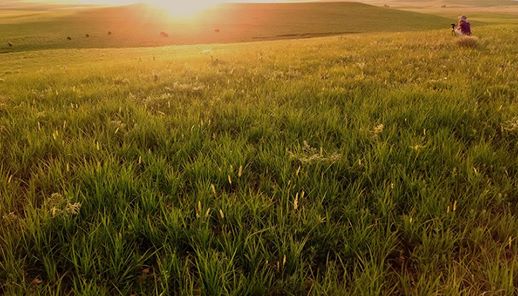











The Chase County CourtHouse copula is surrounded by scaffolding for routine maintenance. The work must be done every 4 to 6 years, depending upon the temperature extremes. It’s time for the paint to be scraped, for the wood to be re-primed, and repainted, and the roof to be “re-sealed”. We don’t want our beautiful work on the inside to be ruined because of a leak caused by neglect. Besides, she always looks so fine with fresh lipstick! We learned this week that the flagpole is wooden. Apparently, it’s never before been scraped clear to the wood, or at least, if it has, nobody has recorded it. Can you imagine…..140 years, that flagpole has been there! The folks tell us that the original timber framework of the copula is still intact – some of it show charring, from the fire in the 1970s. But it’s still sturdy. She’s a grand old girl, our Queen of the Kansas Prairie!
Ah! Thanks Sue!
I enjoyed the trip! Thanks so much for sharing a part of the United States I know little about. Great pictures and interesting facts!
Thanks Amy!
Thanks for sharing your trip in photos with us. Amazing architecture. That’s my passion as well. I liked the history you shared as well. Have a good week.
You too, Thank you Becky!
Fascinating! Thanks for sharing your lovely pictures and writings with us. The limestone is so beautiful! I thoroughly enjoyed it all. And it got me to thinking…my grandmother was born in Potter, Kansas. So I got out the Rand McNally Road Atlas – no help at all! It’s not listed. Would either you or Harland have any idea where Potter would be (or would have been) located? It would just be fun to know.
Thanks Jeanne!
According to Wikipedia, “Potter is an unincorporated community in Atchison County, Kansas, United States. Potter is located on K-74 9.5 miles (15.3 km) south of Atchison. Potter had a post office with ZIP code 66077, which opened on May 14, 1865, and closed on May 16, 2009.”
You can find what’s left of Potter if you search for it on Google maps.
Thanks, Suzanne! I’d never have thought of looking on Wikipedia!! I wish I could actually go to Potter and look around! It would be fun! My grandma was born in the late 1800s. With your help, I actually located Potter on the atlas map. It just isn’t listed in the back!
Go to google earth maps and zoom in. You can see the streets, buildings, sidewalks, etc.
Thanks once again for taking me along on your trip. I love learning the history of places. I could just imagine that train station full of people coming and going to different destinations. I’m glad they are going to fix it up to be open to the public.
Me too, thanks Kathy!
Recognized the Waterville opera house shot on FB. Jeez, I hope you two waved when you drove by. We could have met for lunch or something.
Great post. You have a new reader!
I’m heading out that way this weekend for the butterfly count.
Welcome!